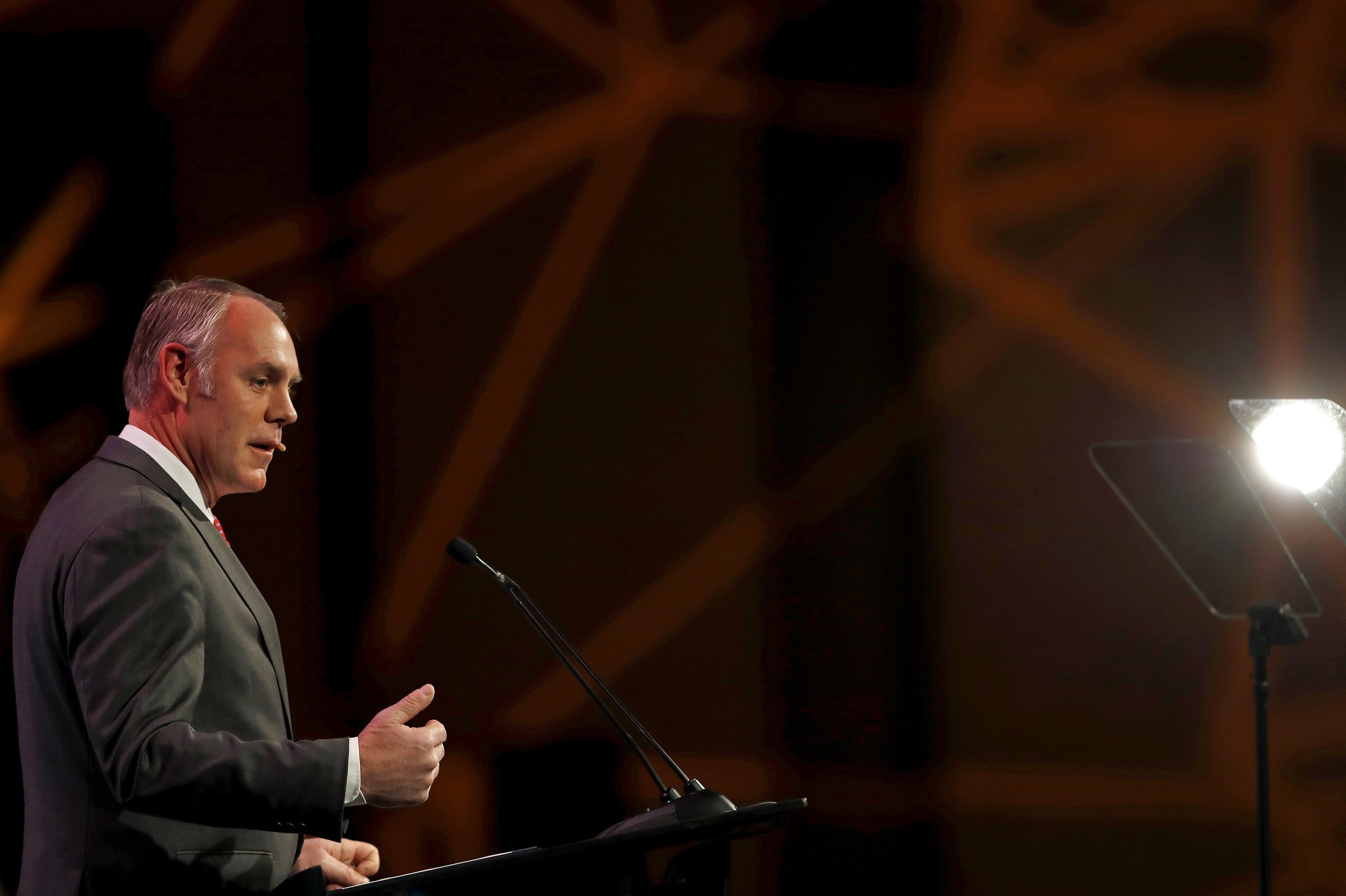
In a speech before oil and gas industry executives, Interior Secretary Ryan Zinke argued that the production and transportation of wind turbines contributes to global warming, but he overstated the factual case, especially when compared with other forms of energy.
Speaking at the CERAWeek energy conference hosted by IHSMarkit in Houston, Zinke also echoed a long-held argument from President Donald Trump that wind turbines kill birds.
“We probably chop us as many as 750,000 birds a year with wind and the carbon footprint on wind is significant,” Zinke said. “I always thought the best place for wind was on the roof of a house.”
Spread out over the life cycle of a typical turbine, scientists estimate that the typical wind plant generates between .02 and .04 pounds of carbon dioxide equivalent per kilowatt-hour of electricity produced. Even at the high end, that’s less than 3% of the emissions from coal-generated electricity and less than 7% of the emissions from natural gas-generated electricity.
In his remarks, Zinke acknowledged that fossil fuels generate carbon dioxide emissions to argue that “every type of energy has a consequence,” though he did not expand on that concern.
He also overstated the numbers on bird deaths.
President Donald Trump has long complained on Twitter about wind farms and opposed one that he feared would affect views from his golf course in Scotland. While promoting his energy plan in 2016, Trump made a similar claim, arguing that “more than 1 million birds a year” are killed by wind farms.
Wind turbines, with blades that can extend more than 300 feet in the air and spin at speeds topping 150 miles per hour, do kill birds with some estimates in the hundreds of thousands. But scientific studies peg the actual number of bird deaths as anywhere from 20,000 to 573,000 a year, while the U.S. Fish and Wildlife Service estimates that it’s around 500,000.
Birds are also killed in other forms of energy production — and industry more broadly — at even higher numbers. A 2012 Bureau of Land Management memo estimated that between 500,000 and 1 million birds die in oil fields each year, for instance. And birds also face a threat from climate change caused driven by carbon dioxide emissions. The Audubon Society, a nonprofit dedicated to the protection of birds, supports wind power as key to solving global warming.
Zinke’s comments came as part of call for an “all of the above” energy strategy in which oil and gas continue to play a significant role. Zinke also criticized large solar installation for taking away from public lands used for recreation and hunting and acknowledged that oil and gas generate carbon emissions.
“There’s no such thing as free energy,” he said.
More Must-Reads from TIME
- Cybersecurity Experts Are Sounding the Alarm on DOGE
- Meet the 2025 Women of the Year
- The Harsh Truth About Disability Inclusion
- Why Do More Young Adults Have Cancer?
- Colman Domingo Leads With Radical Love
- How to Get Better at Doing Things Alone
- Michelle Zauner Stares Down the Darkness
Write to Justin Worland / Houston at justin.worland@time.com